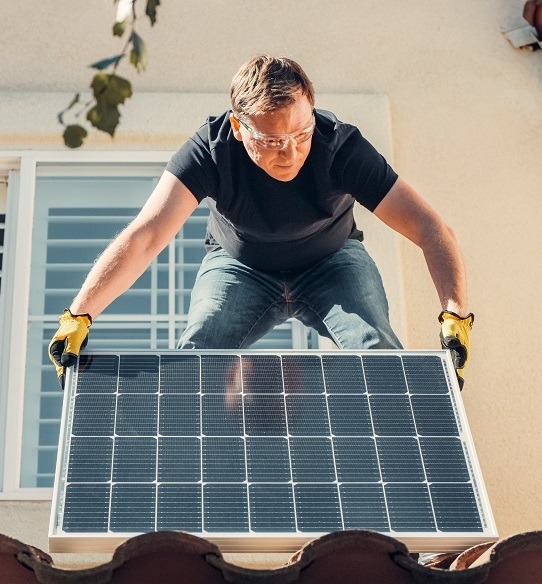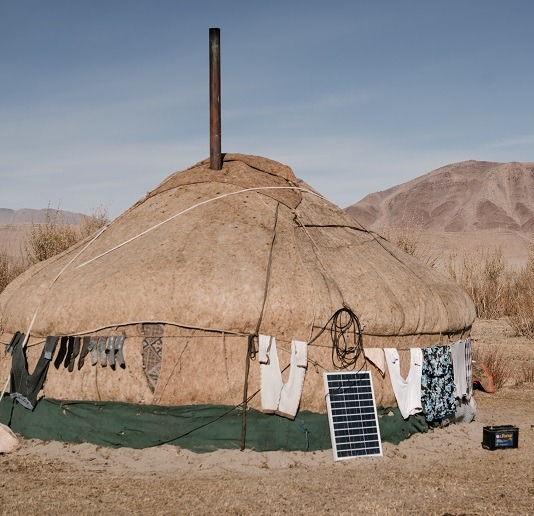A Trend Whose Time Has Come

The way we use energy at home can increase or limit greenhouse gases. As climate disruption is a pressing issue for everyone, “green” buildings and habits aren’t just nice to have—they’ve become essentials.
Green home innovations are enabling homeowners to turn natural forces into heating, air conditioning, and electricity to power appliances and devices. Electric cars can now be charged in people’s garages. Renewable power can be efficiently stored, with the excess redirected into the grid to help power whole communities.
All our readers can play a part. From deciding on green architecture, to planning simple upgrades for a home you own today, to finding eco-minded investment opportunities, here’s the scoop, Q&A-style.
How Do We Define the Zero-Carbon Home?
Zero-carbon homes, sometimes called zero-energy homes, are residences that meet especially high energy-efficiency standards. You’ll sometimes hear the term net-zero. That can get murky, but it generally means the greenhouse gases a house emits get offset by the amount spared by green features and energy habits. Can a household, for example, generate enough clean power to make up for the energy used? Can the annual energy a household needs from the grid be returned to the grid? This is the goal of a net-zero home.
So, while many people are making their homes and their habits more energy-efficient, some are going for net-zero emissions, and builders are now offering homes that embed the goal into their design. For these builders, there’s more to zero-carbon than solar panels.
Green architecture focuses on natural building materials—native to the area, when possible, to cut shipping energy. Natural materials can reduce both energy and pollution, while resulting in better household air quality.
What’s the Price Tag for a Zero-Carbon Home?
In cost terms, zero-carbon homes typically run from 5 to 15 percent higher similar-sized, regular homes. That said, the upfront premium on a green home will gradually — after three to seven years — be paid back by the house through electricity savings.
And then there are the tax breaks. Some of the costs of renewable energy equipment and installation are refunded to the homeowner by the federal government. Check for state and local tax advantages for renewable power, too.
Pro tip: Looking for a cheaper option with the home you have now? You may be able to get renewable energy through your local energy company. There are a number of renewable power companies that allow you to sign up, while your bill is still generated from your regular utility. Renewable power tends to be available for about the same cost as coal-generated power today.
Are There Special Building Materials and Methods for Zero-Carbon Homes?
Yes, it’s all about special materials and methods. Architects plan window placement and slope the roof in the way that best optimizes a future home’s ability to catch sunlight and hold warmth in through the colder months. To use natural resources efficiently, they may work with geothermal heating. Natural gas is a no-no. It’s a greenhouse-gas culprit, albeit a more cost-efficient one than coal. Plus, it emits volatile chemicals that can compromise a home’s air quality.
There are also options for renewable energy storage. Why? Because, for example, solar panels can generate a fair amount of power on a sunny summer day — and not so much on a rainy one. To lessen the home’s dependence on the grid (or to go off-grid), the home will need a battery capable of holding extra energy for days when it’s needed.
Important note: Global carbon emissions are attributed to our food and transit systems as well as to our buildings. Thus, a house’s location (is the area walkable, or car-dependent?) plays a significant role in carbon emissions.
What About Green Upgrades for an Existing Home?

Maybe you already have a home you’re planning to live in for years. And you are wondering if your existing house can become a zero-carbon home.
It could work. Consider that upgrading your existing home is typically more efficient than building anew. Why? Because so much energy and so many resources are used in materials and construction for new homes. Half of the low-carbon effort involves the energy used at home; the other half of the carbon equation is in all the energy used in extracting and shipping raw materials, then in making and delivering the building products.
In some settings, a net-zero energy house isn’t achievable. Maybe the south-facing roof surface is under the shade of a mountain outcropping, or an award-winning sycamore. Maybe the climate is simply too harsh. But even if you can’t get to net-zero, you can still improve your home’s energy efficiency.
Where would you start? You can seek out a certified energy adviser, and put your home through an energy audit. A professional can advise on some straightforward renovations, and point you to certified contractors in your area. Simple upgrades may include solar-powered and geothermal heat options, and sealants to keep warmth and cooling inside the home.
What Are the Design Rules for an Actual Carbon-Neutral Home?
One Canadian company is proving you don’t need to live in a yurt to have an authentically eco-friendly home. Check out the Eco-Habitat S1600 LEED house: tour the home in virtual reality here, using your arrow keys. Note the carbon-absorbing garden on the patio roof. There’s even a running planter over the kitchen cabinets. Every detail is planned for beauty, air quality, and eco awareness.
Here are the specifics that architects have learned from designing and testing these futuristic homes:
- Asphalt shingles aren’t used. They’re petroleum-based, vulnerable to wear and tear, and rarely repurposed.
- Basements are also ruled out. They use up too much concrete, and concrete is the single biggest factor in building emissions.
- Non-toxic plywood is superior to drywall and other cabinet material. Wood or plant-derived structural and insulation materials — think flax, hemp, cork — are preferred.
- Marmoleum, made from linen, is an excellent floor covering. It’s natural, strong, non-toxic, and recyclable.
- Steel gets a green light. It uses a lot of energy to make, but it’s long-lasting and fully reusable.
The designer and the buyer decide what type of heat will be used. Solar-assisted radiant energy is often integrated. So are well water, low-flow toilets and showers, and high-efficiency appliances.
Is Wall Street Following the Low-Carbon Trend?
Yes. One more opportunity for the “greening” of real estate is found with the large North American holding companies. They have seen the writing on the wall, as some of their cities have set net-zero goals for the near future. Their investors and their renters want buildings with energy-efficient features. And insurers and lenders are under increasing pressure to back such projects.
So, more than a dozen real estate companies have committed to lowering their emissions, including UDR (25% lower greenhouse gas emissions from 2015 to 2025) and Equity Residential (30% lower greenhouse gas totals across the company’s sites and satellite businesses by 2030).
The Takeaway?
It’s simple. Whether you’re a homeowner, home buyer, home builder, or investor, it’s important to know that sustainability is an imperative for the housing market of the future. Understanding net-zero emissions in real estate is critical to this knowledge.
Supporting References
Juliet Davenport for Forbes: We Need to Build Zero-Carbon Homes. And Fast. (Jun. 24, 2021).
Pam Rosacia for S&P Global Market Intelligence: Net-Zero Transition Gains Momentum in Real Estate as Commitments Grow (Oct. 25, 2021).
Anna Fixsen for the Architectural Digest: Need to Know – How to Design a Net-Zero Home (Jul. 7, 2020).
Tobias Roberts for Rise: Zero-Carbon Home: What Is It? (Jun. 2, 2020; updated Jun. 14, 2021).
Para · Sol® Eco-Habitat S1600 Single Family Residence. See also The EcoHome Network: Prefab Passive House & LEED Ready Kit Homes – The Future of Home Building? (May 8, 2020; updated Aug. 17, 2021). The Eco-Habitat S1600 is designed by Para · Sol Architecture & Development, and built by Batiment Pre-Fab Inc.
Photo credits: ArtHouse Studio and Kindel Media, via Pexels.
